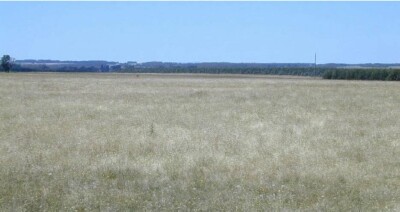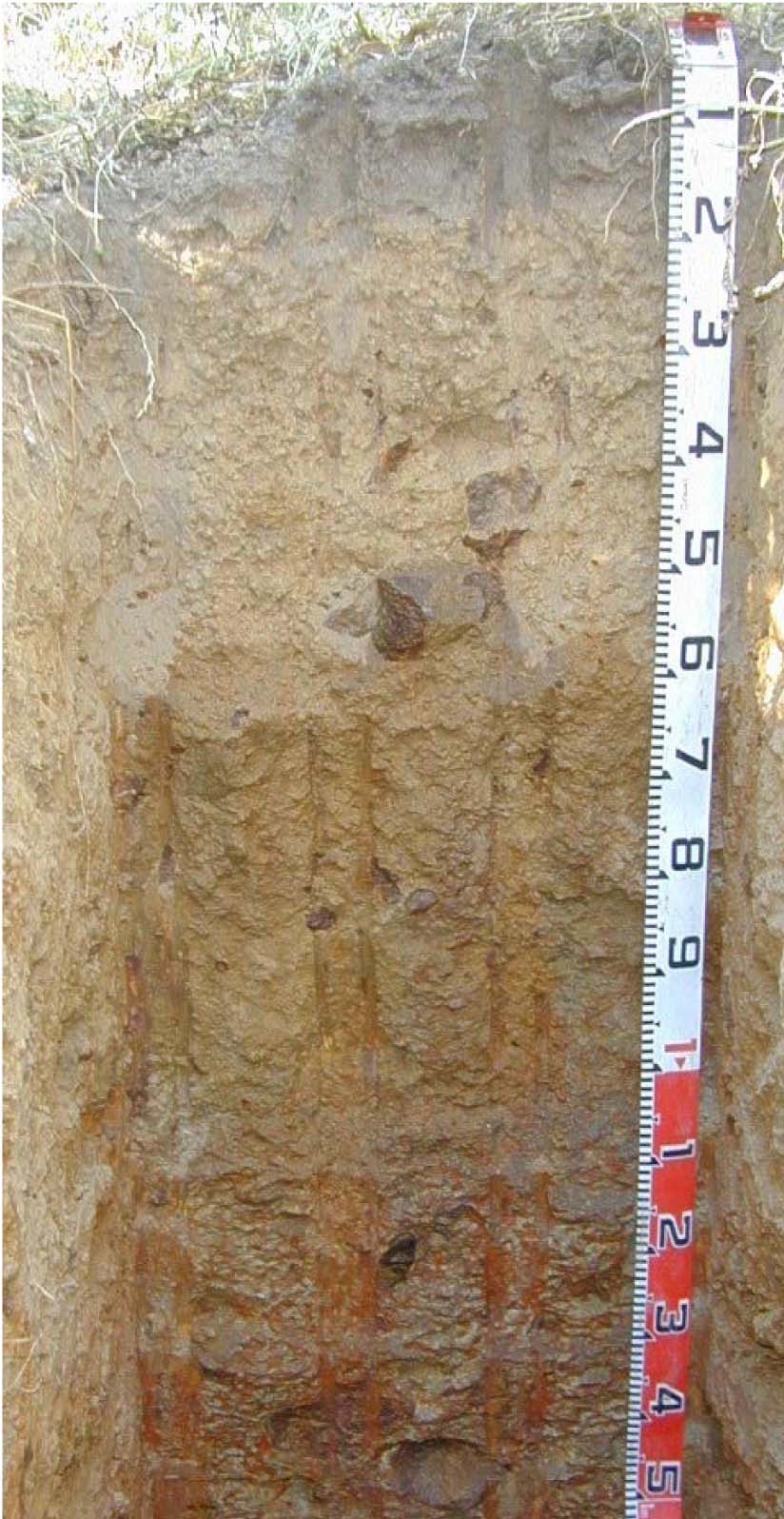JEE98 (Plot 1)
| Site: JEE98 (Plot 1) | Land Unit: Dundas Redgum |
| Aust. Soil Class.: | |
 | General Land Unit Description: The flat surface of the Dundas Tablelands predominantly consists of Brown Chromosols and to a lesser extent Yellow Chromosols with a ferric horizon, typically occurring above the clay subsoil. The soil is commonly developed over a highly weathered mottled zone. This red and white mottling, sometimes referred to as ‘tiger mottles’, is thought to be the result of deep chemical weathering which occurred during the late Tertiary period. Red gums are the dominant vegetation found on this surface. Two year old Eucalyptus globulus plantation on ex-agricultural land. |
Site Description:
| Geology: Cainozoic duricrust | Landform pattern: Gently undulating plains |
| Position in landscape: Flat | Internal drainage: Imperfectly drained |
Soil Profile Morphology
| A1 | 0-15 cm | Very dark greyish brown (10YR3/2) sandy loam; weak polyhedral structure (20-50 mm); weak consistence when dry; common medium ferruginous nodules; many medium roots; clear and smooth transition to: |  |
| A2 | 15-55 cm | Yellowish brown (10YR5/4) clay loam; unable to assess structure due to presence of segregations; weak consistence when dry; very many medium ferruginous nodules; many subrounded basalt cobbles (strong rock); common very fine roots; gradual and smooth transition to: | |
| Subsoil | |||
| B21 | 55-100 cm | Brown (10YR5/6) with common medium faint yellowish red (5YR5/6) mottles, light clay; weak polyhedral structure (20-50 mm) parting to weak granular structure (5-10 mm); weak consistence when moderately moist; many coarse ferruginous nodules; many subrounded basalt cobbles (strong rock); common very fine macropores; areal porosity 0.1%; few very fine roots; gradual and smooth transition to: | |
| B22 | 100-150 cm | Yellowish red (5YR4/6) with many coarse prominent pale brown (10YR6/3) and yellowish brown (10YR5/6) mottles, light clay; moderate polyhedral structure (20-50 mm) parting to moderate granular structure (5-10 mm); firm consistence when moist; common coarse ferruginous nodules; many subrounded basalt cobbles (strong rock); few very fine macropores; areal porosity 0.04%; few very fine roots. | |
| 150-190 cm | Increasing basalt to >80% and fractured rock, too hard for backhoe to dig further, some matrix for roots to grow into but limited water holding capacity. |
Key profile features:
- Ferruginous nodules and coarse fragments
- Mottled subsoil
Notes: Water holding capacity below 190 cm may be limited due to the present of basalt cobbles and fractured rock.
Sampled by: Ian Sargeant, Paul Feikema and Kiet Quach (7 December, 2000).


